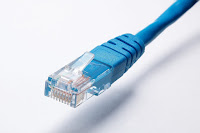Troubleshooting Ethernet Crossover Cables: Top Signs of Dysfunction
Ethernet crossover cables are essential tools for directly connecting two computers without the need for a router or switch. These cables are commonly used in networking environments to facilitate direct data transfer and are particularly useful in small or temporary networks. However, like all networking hardware, they can experience issues that hinder their performance. Understanding the common signs of dysfunction in ethernet crossover cables can save time and frustration. In this blog, we will explore the top signs of malfunction and how to address them effectively.
1. No Connectivity
One of the most apparent signs of a problem with your ethernet crossover cable is the complete lack of connectivity between devices. If you plug in the cable and the devices do not recognize each other, the cable could be at fault. This issue often arises from physical damage to the cable or connectors. Inspect the cable for any visible signs of wear and tear, such as cuts, kinks, or frayed ends. Additionally, check the connectors for bent or broken pins.
2. Intermittent Connection
An intermittent connection can be frustrating as it often occurs sporadically, making it difficult to diagnose. If your network connection drops in and out, the ethernet crossover cable might be the culprit. This can be caused by internal wire damage or poor-quality manufacturing. Wiggle the cable gently at both ends to see if the connection stabilizes or worsens. If the issue persists, consider replacing the cable with a higher-quality option to ensure a stable connection.
3. Slow Data Transfer Speeds
Ethernet crossover cables should provide fast data transfer speeds suitable for the devices they connect. If you notice that file transfers or network activities are slower than expected, the cable might be underperforming. Slow speeds can result from internal resistance or interference. Ensure that the cable is properly shielded and not running parallel to power cables or other sources of electromagnetic interference. Upgrading to a cable with better shielding can improve performance.
4. Unrecognized Devices
Sometimes, devices connected via an ethernet crossover cable may not be recognized by the network or operating system. This issue could stem from compatibility problems or faulty cable wiring. Ensure that the devices you are connecting support direct network connections and that their network settings are configured correctly. Testing the cable with different devices can help determine if the problem lies with the cable or the connected hardware.
5. Physical Damage
Physical damage is a common cause of dysfunction in ethernet crossover cables. Regular inspection of your cables can help identify issues before they lead to significant problems. Look for visible damage such as cuts, bends, and frayed ends. Additionally, check the connectors for any signs of wear or damage. Even minor physical defects can significantly impact the performance of the cable.
6. Poorly Crimped Connectors
The connectors on ethernet crossover cables must be securely crimped to ensure a reliable connection. Poorly crimped connectors can lead to intermittent connections and data transfer issues. If you suspect that the connectors are not properly crimped, you can use a crimping tool to re-crimp them. Ensure that all pins are correctly aligned and making proper contact with the wires inside the cable.
7. Network Collision
Ethernet crossover cables are designed to handle direct device-to-device communication. However, if there is a network collision, where multiple devices try to send data simultaneously, it can lead to performance issues. This is more common in older networking equipment that does not support full-duplex communication. Upgrading your devices to those that support full-duplex can help mitigate this issue.
Troubleshooting Steps
To troubleshoot issues with your ethernet crossover cables, follow these steps:
- Visual Inspection: Check the cable and connectors for any visible signs of damage.
- Test with Different Devices: Use the cable with different devices to see if the issue persists.
- Check Network Settings: Ensure that the network settings on your devices are correctly configured.
- Use a Cable Tester: A cable tester can help identify internal wiring issues.
- Replace the Cable: If the cable is old or damaged, replacing it with a new, high-quality cable can resolve many issues.
Conclusion
Ethernet crossover cables are vital for direct device-to-device networking, but they can experience various issues that disrupt connectivity and performance. By recognizing the signs of dysfunction and taking appropriate troubleshooting steps, you can maintain a stable and efficient network. For high-quality ethernet crossover cables, consider exploring the range offered by Datacomm Cables, Inc., to ensure reliable and long-lasting performance.
Understanding the common issues with ethernet crossover cables and how to address them can significantly improve your networking experience. Regular maintenance and timely replacement of damaged cables will help keep your network running smoothly and efficiently.



Comments
Post a Comment